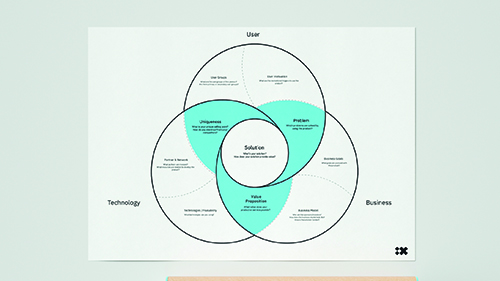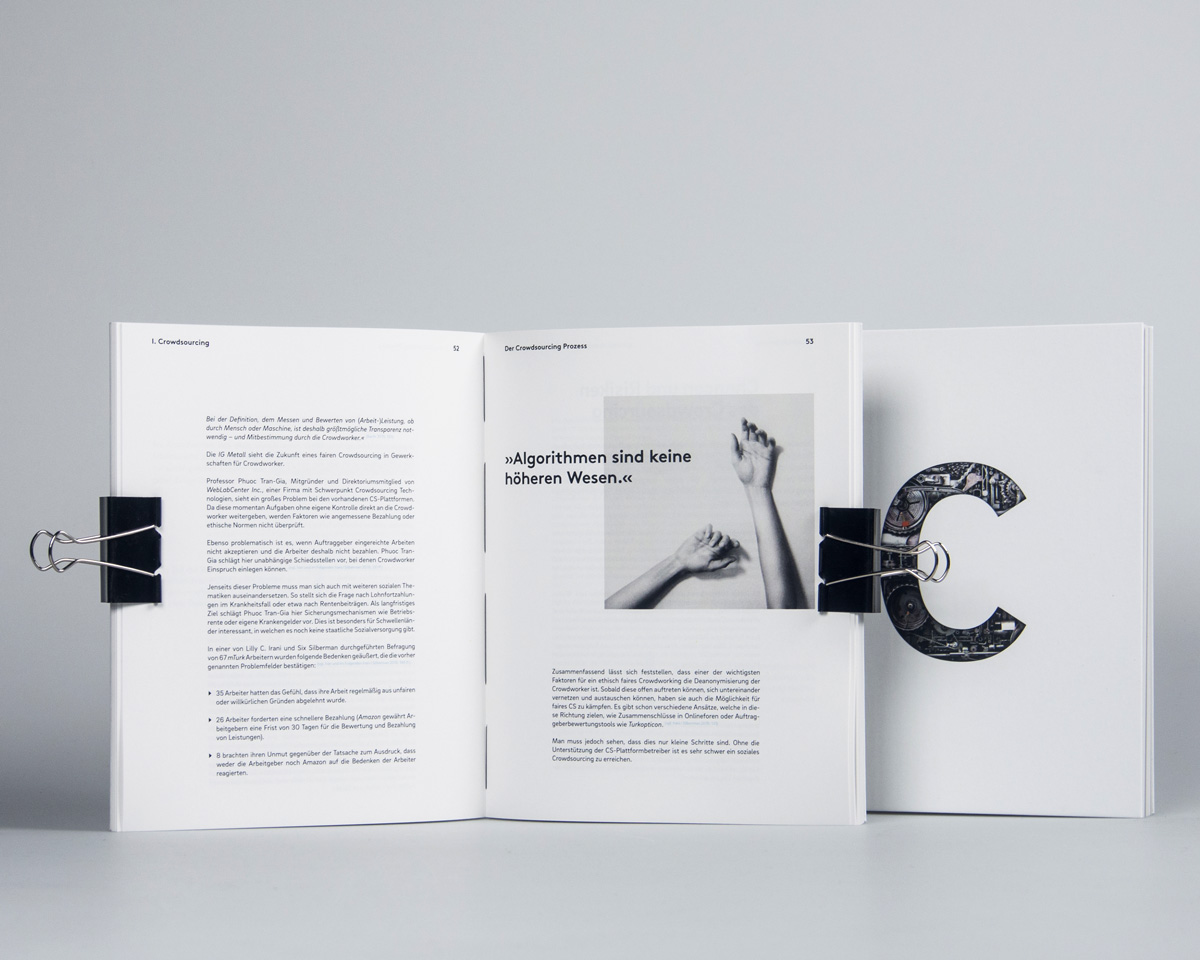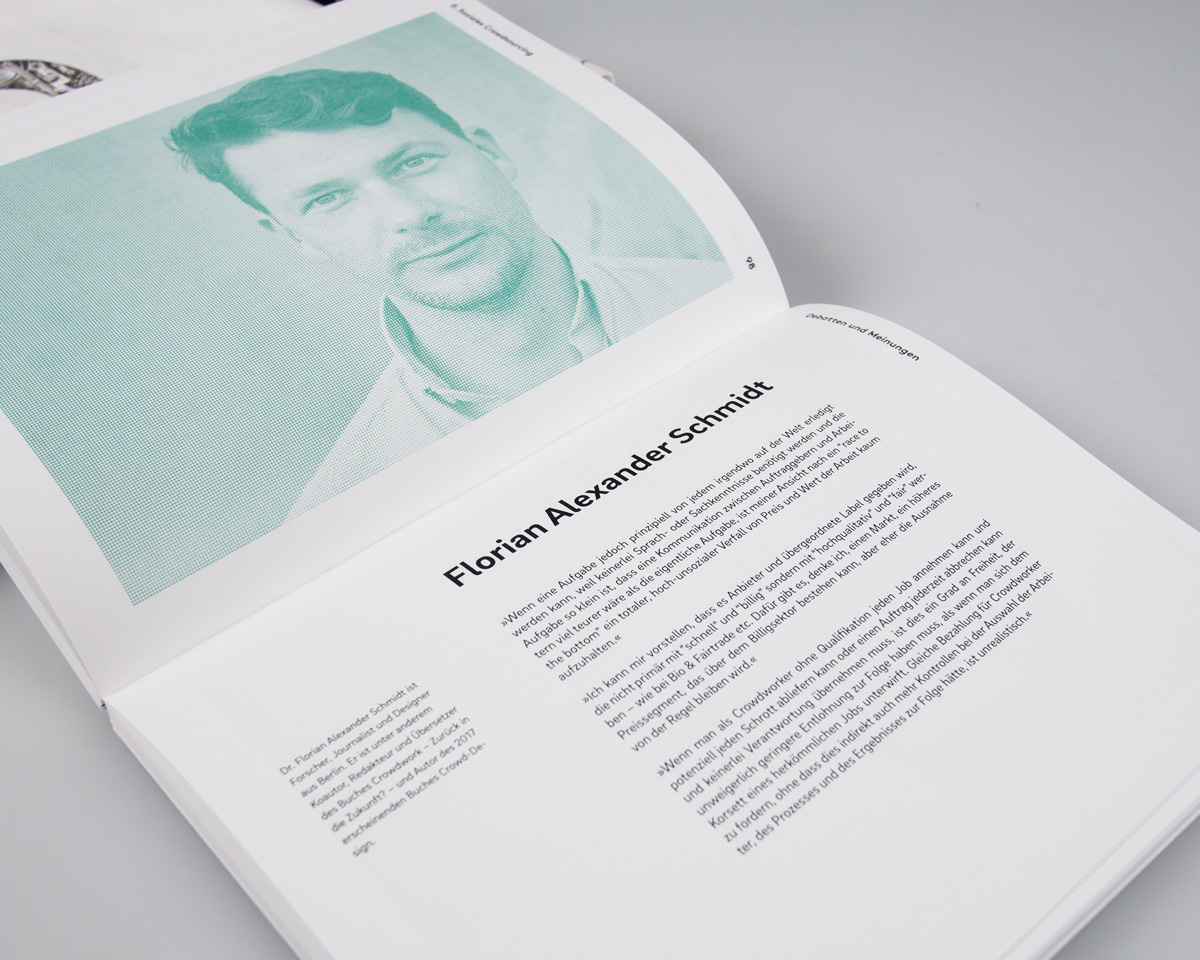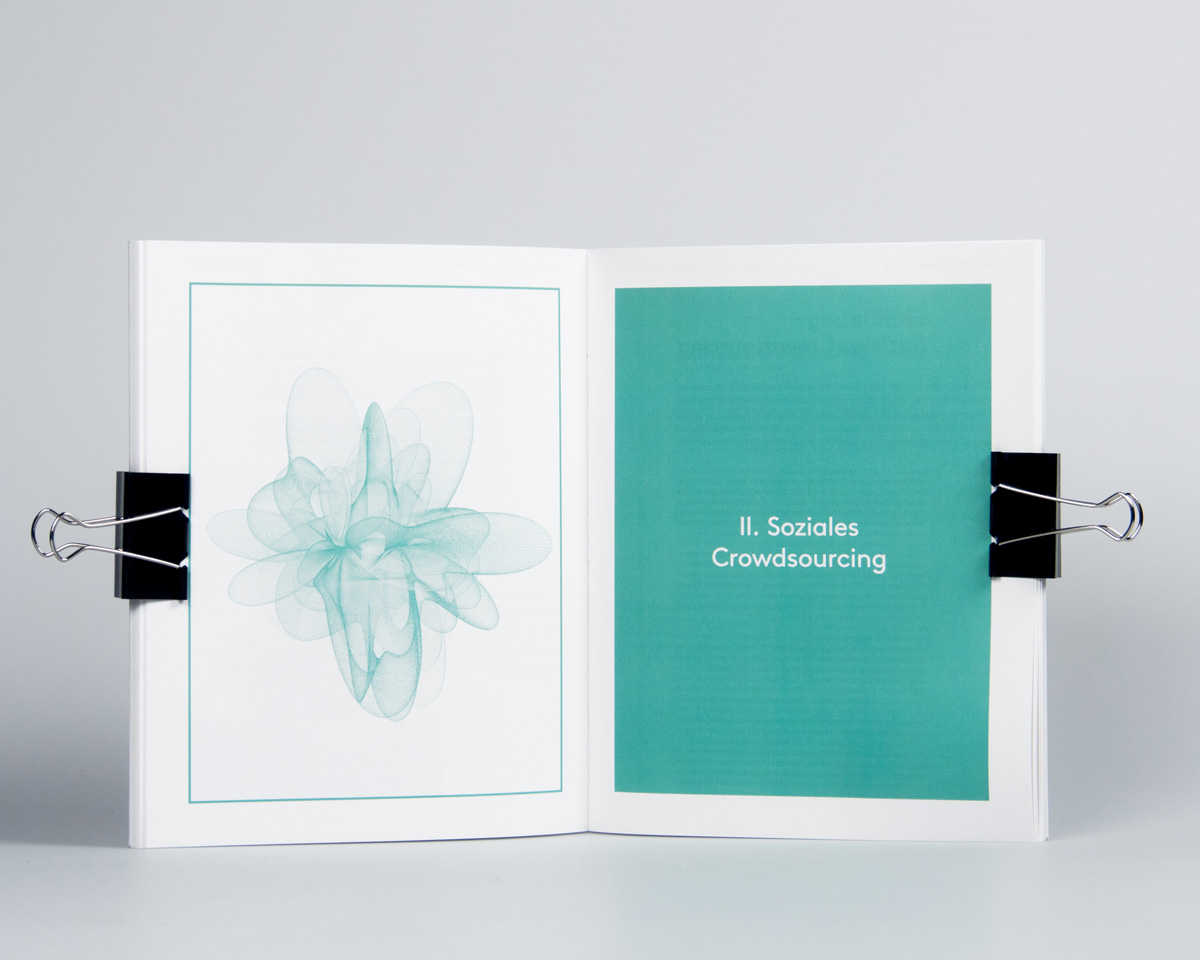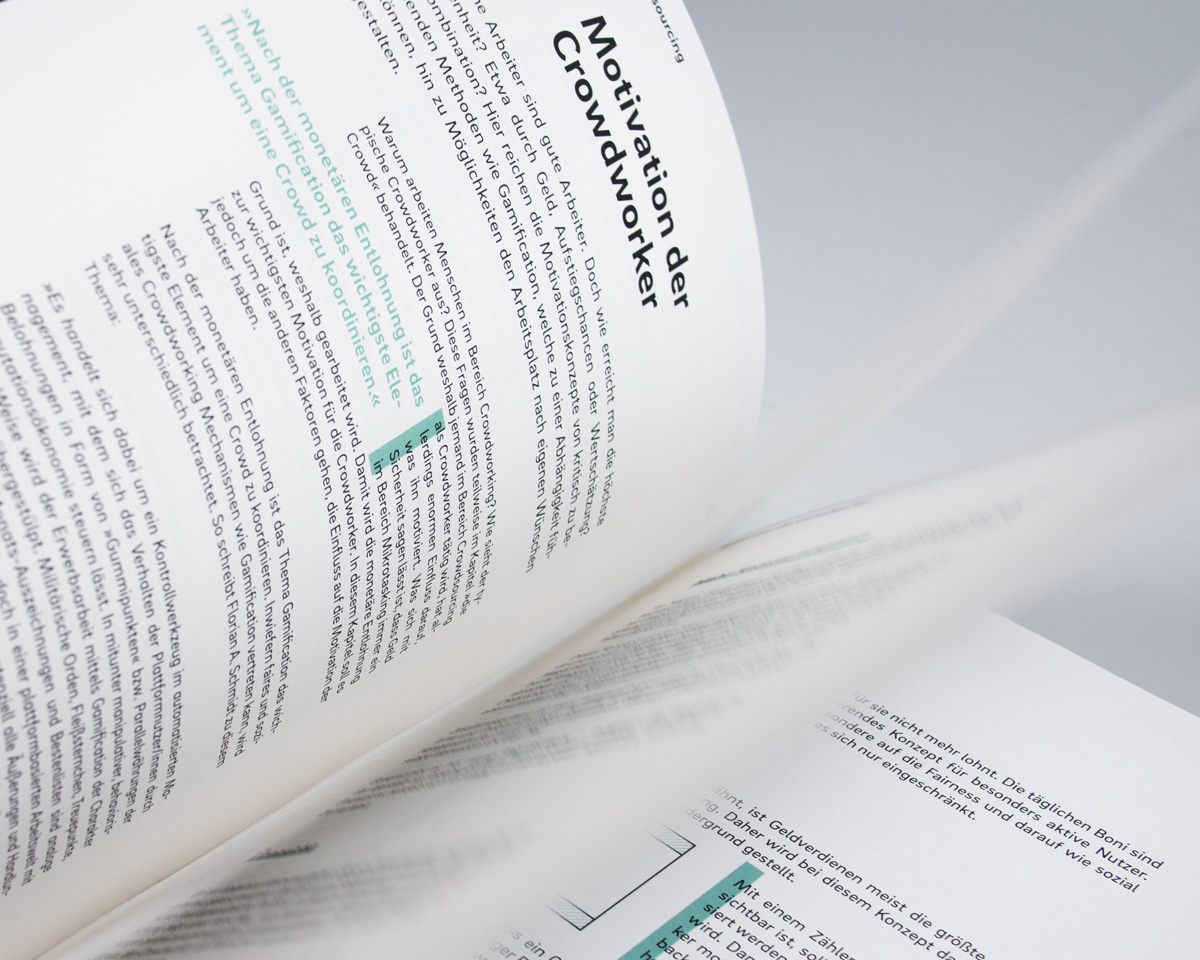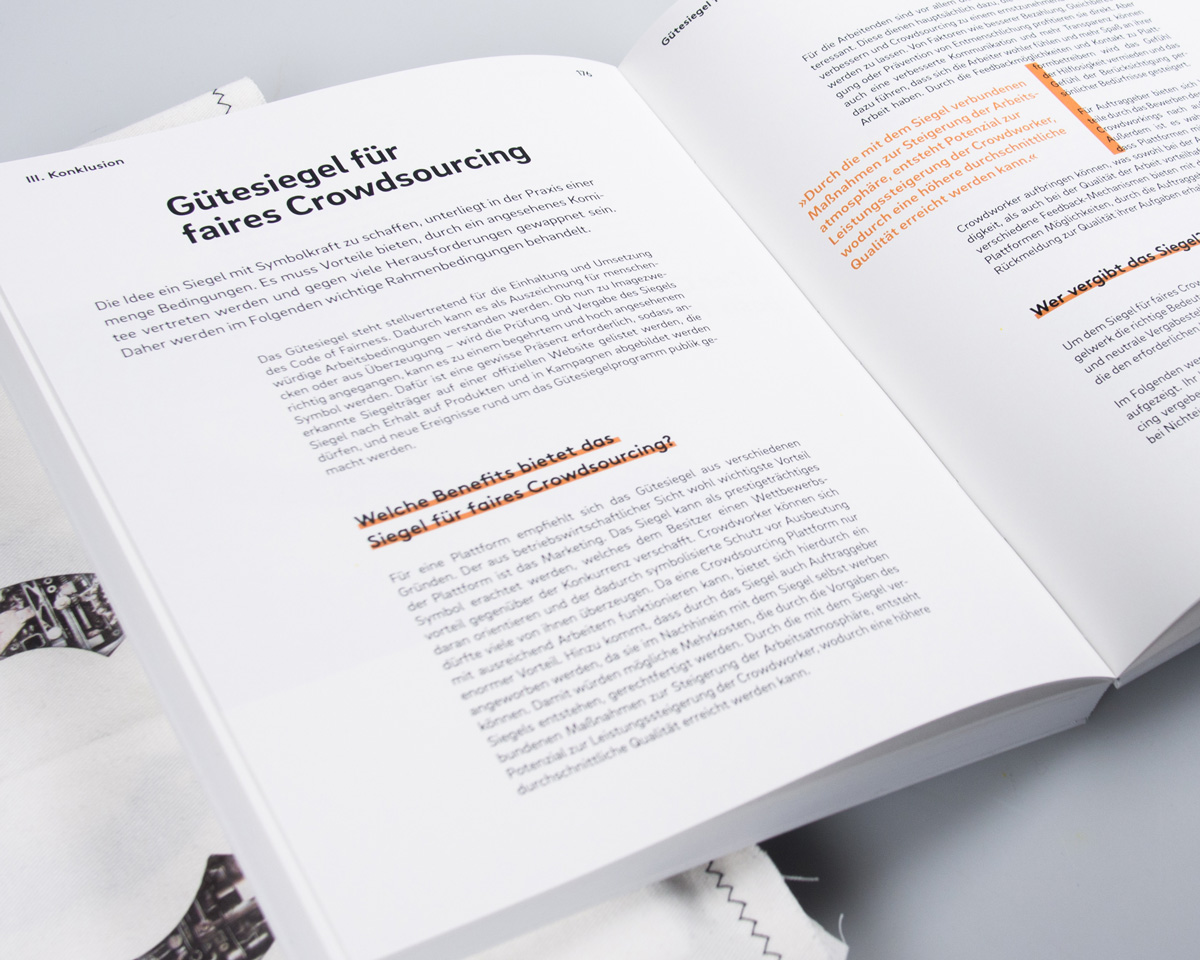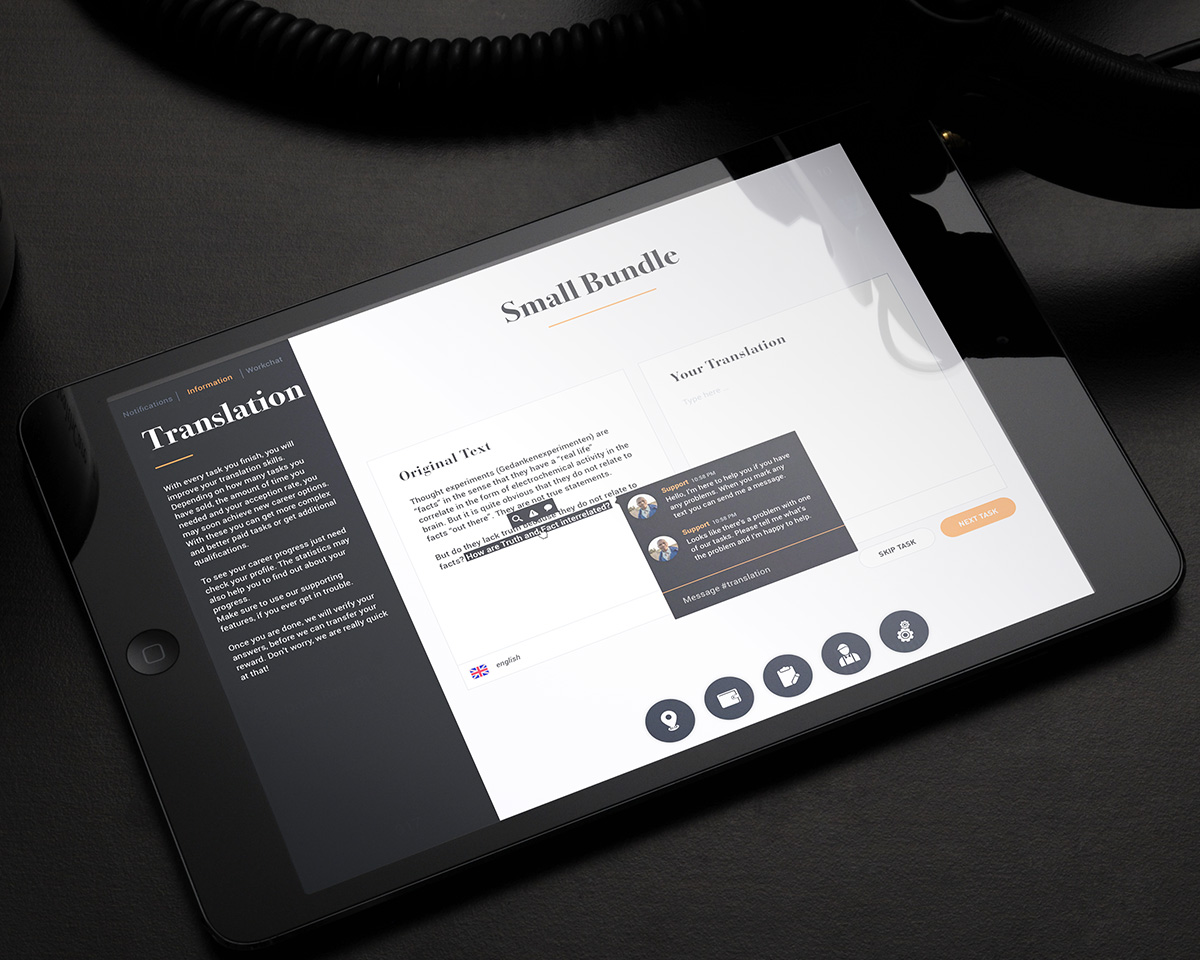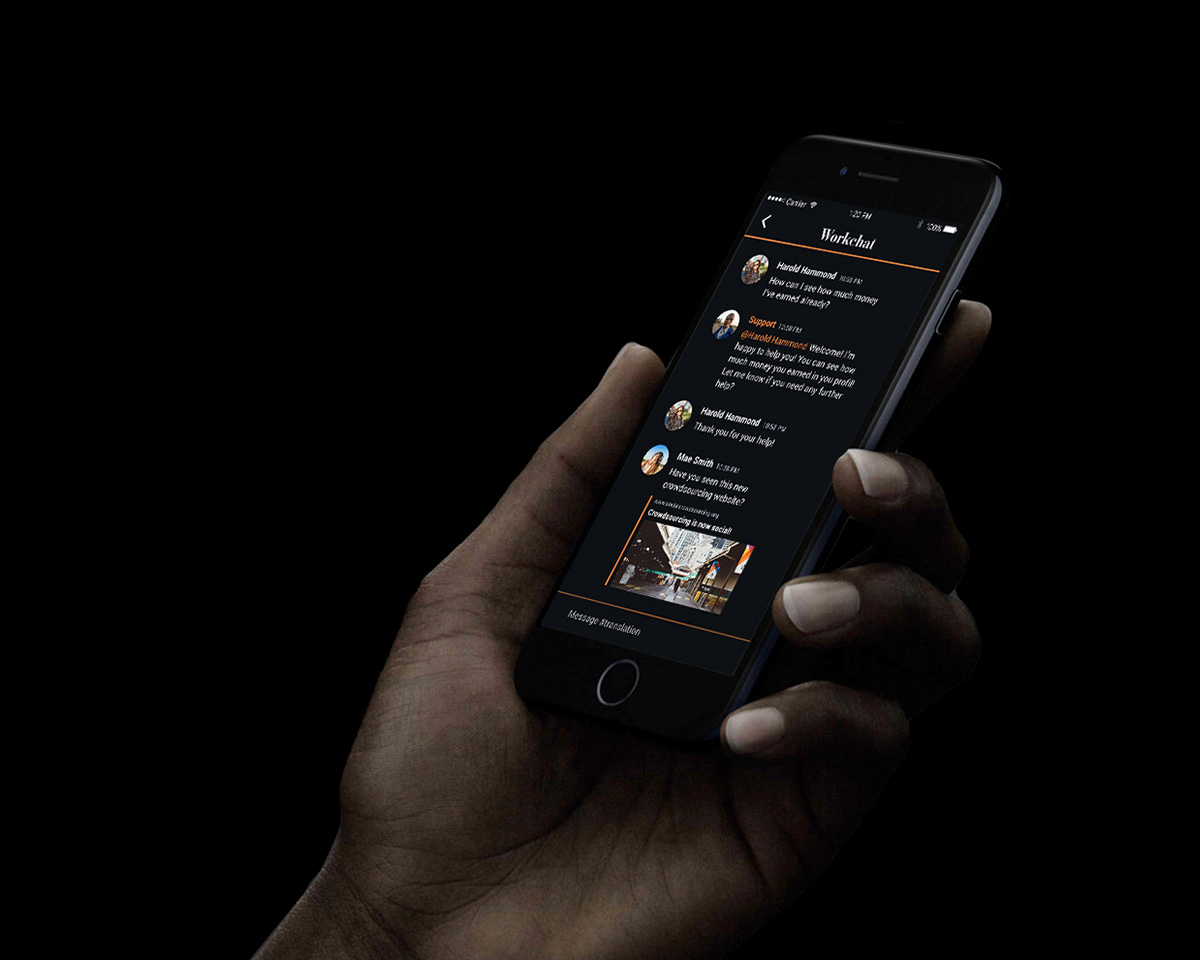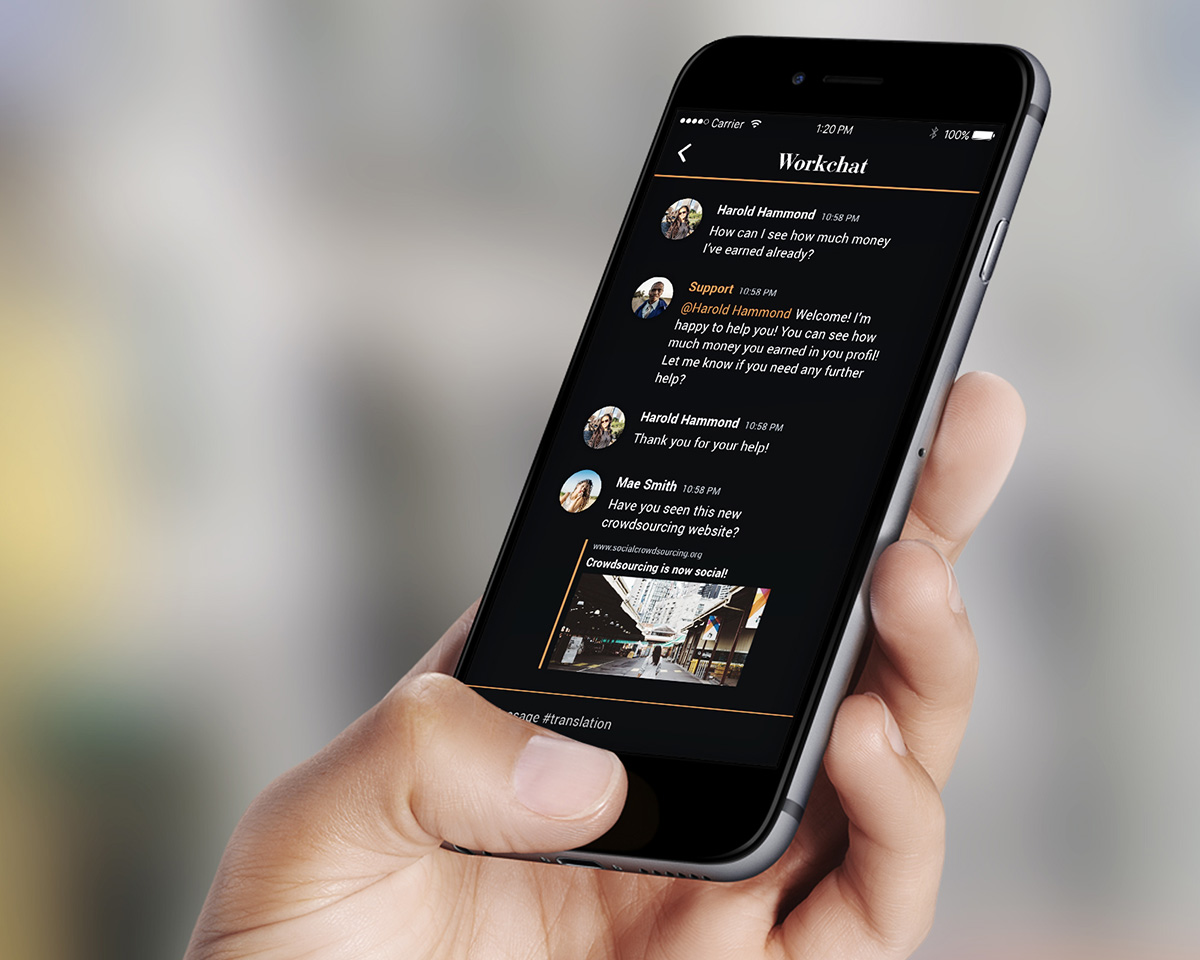This project represents an approach to make the principle of crowdsourcing more social and humane, with advantages for all involved.
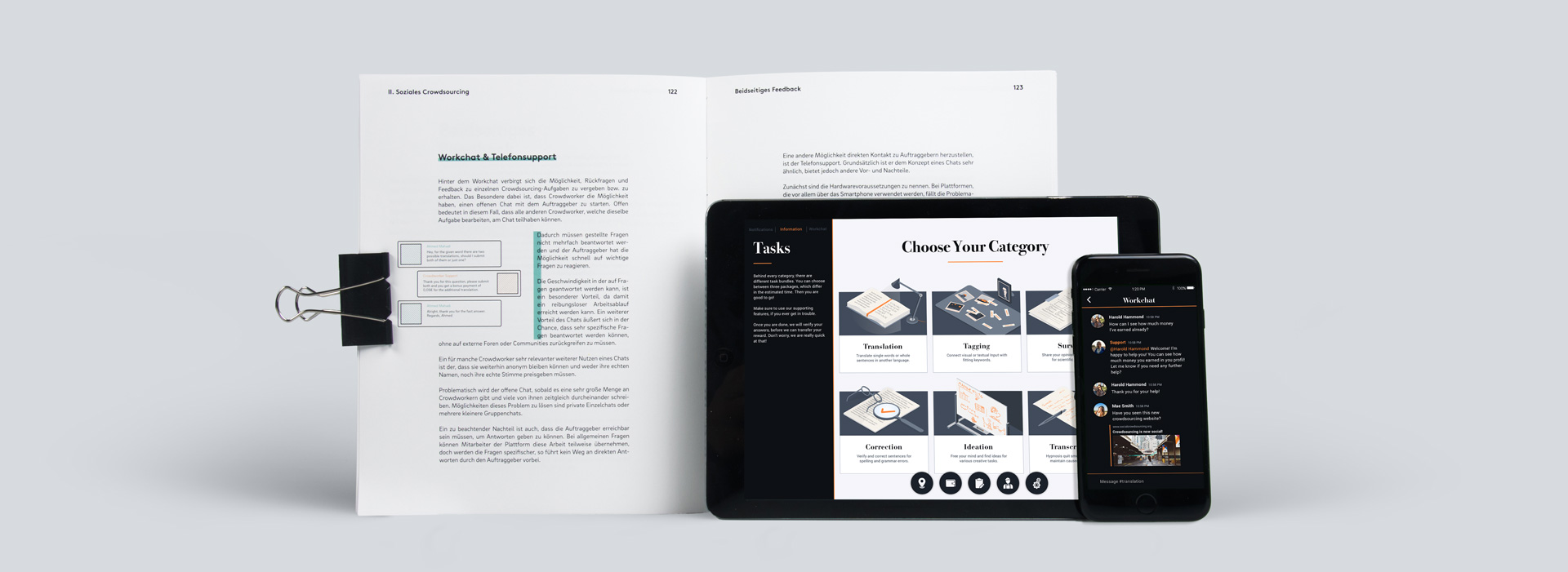
Crowdsourcing is the practice of outsourcing tasks to a broad, loosely defined external group of people. With this new kind of work, new problems appear. This project explores these problems and tries to give solutions to some of the major challenges.
My Role
Research, Conception, Writing, Editorial Design & UI Design
Team Members
Leon Schlechtriem
Year
2017

What is Crowdsourcing?
Crowdsourcing is the outsourcing of partial tasks to a large number of different, independent internet users. Examples for the use of this principle are product tests or the generation of ideas. There are many different platforms on which tasks can be set and processed. Due to the enormous flexibility and low entry barriers it’s very likely that the phenomenon will become very important in the next years.
What's the problem?
Crowdworkers have to deal with extremely low wages and unfair working conditions. That’s a big problem because many people rely on this form of work and are exploited.
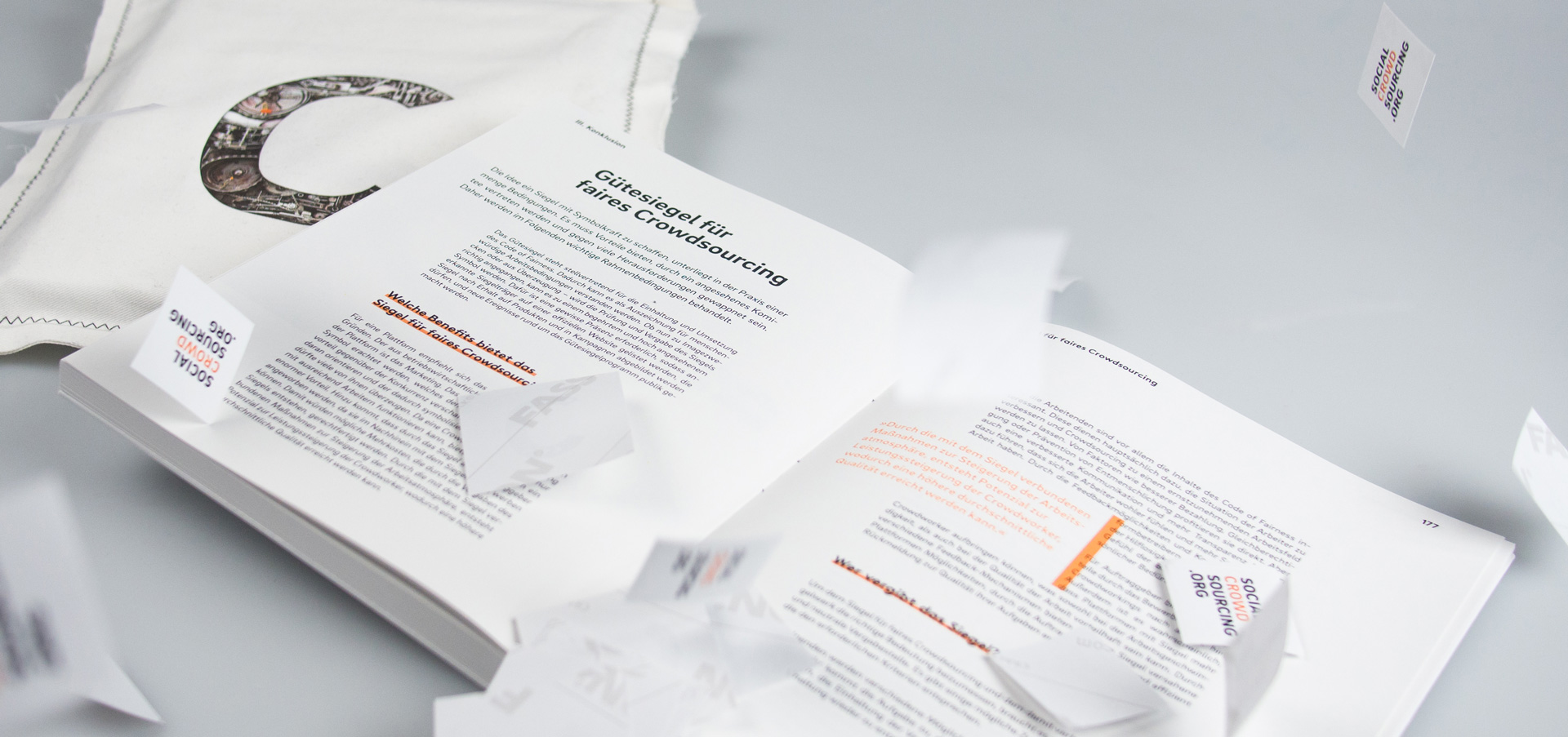
How to improve crowdsourcing?
This project represents an approach to make the principle of crowdsourcing more social and humane, with advantages for all involved.
Therefore we wrote a book that examines the reasons why social factors are mandatory for crowdsourcing. In particular, we dealt with topics like "What is fair wage?" or "How can we prevent dehumanisation?“ Additionally, we created concrete concepts and solutions which are promising for a positive change.
The Book
A book has emerged that examines the reasons why social factors are needed. In particular, topics such as "What is fair pay?" or "How can dehumanization be prevented?" are dealt with, and concrete concepts are presented which are promising for a positive change.

I. Crowdsourcing
The first part of our book deals with the history of crowdsourcing. We analyzed where crowdsourcing comes from, why there are such bad working conditions and how it will develop in the future.
II. Social Crowdsourcing
The second part of the book is all about improving crowdsourcing. We spoke with different experts about chances and risks of crowdsourcing and we created over 30 different concepts to improve different parts of crowdsourcing.
III. Conclusion
The third and last part is the conclusion of our concepts. We thought about how we can motivate the platform owners to implement our concepts. One of the results is a seal of approval for social crowdsourcing.
The Platform
Supplementary to the book, there are practical additions. One of these is an exemplary crowdsourcing platform. This platform visualizes some of our concepts for social crowdsourcing.
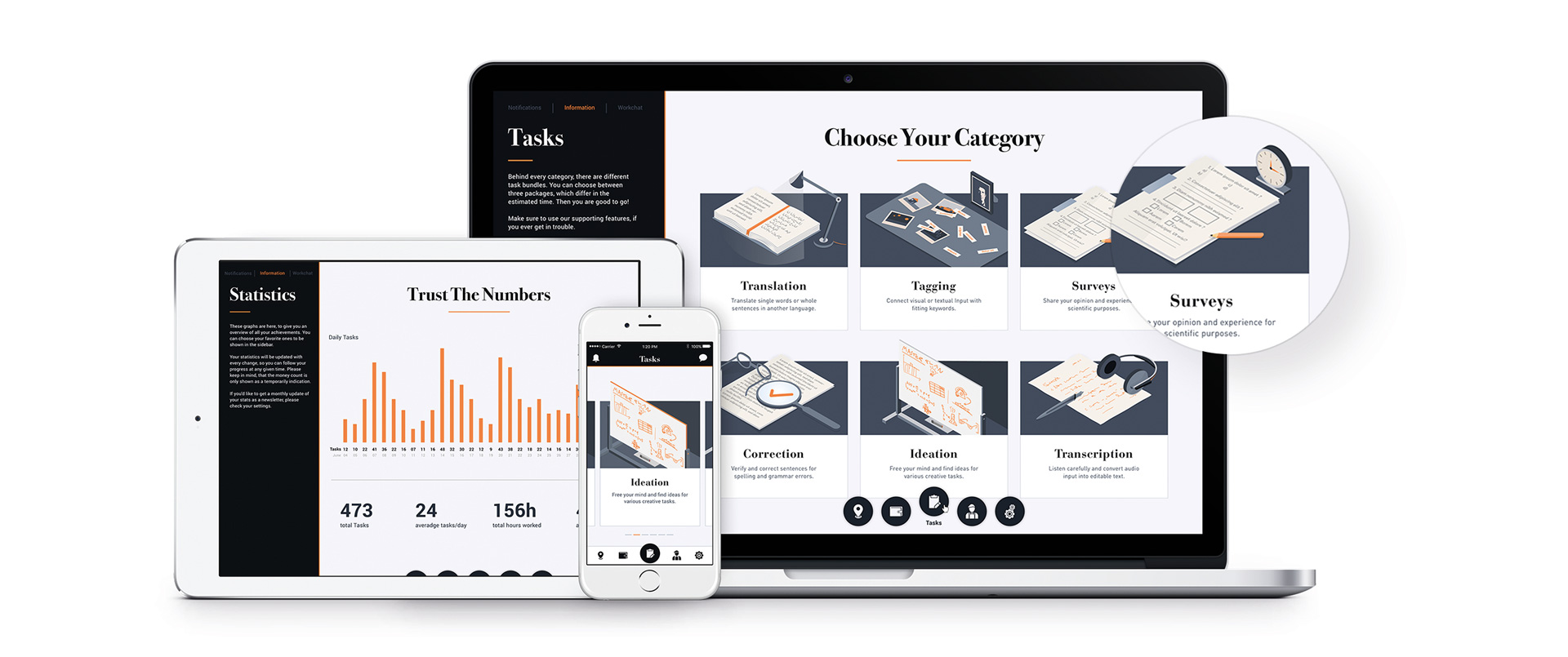
Choose your category
While most of the other crowdsourcing platforms just list all their tasks, we decided to create bundles of matching tasks. This allows us to push important tasks to the front and let them be done faster. Additionally, every crowdworker can choose the bundle that fits him best.


Transparency
This is one of the most important features that's missing on many platforms. We allow every worker to see detailed statistics and explore how their approval rating is composed.
Help & Workchat
To get tasks solved fast, it's mandatory that every crowdworker understands what he has to do. That's why we implemented different options to get help and feedback extremely fast, no matter if you're in a bundle of tasks or just have general questions.
Career
The possibility for crowdworkers to evolve and improve is extremely important for their motivation. We implemented career options and different specialisation paths to satisfy this need.
Publicity
Social awareness is the key to improve crowdsourcing and create pressure on the platform owners. We want to give crowdsourcing some publicity, online and offline.


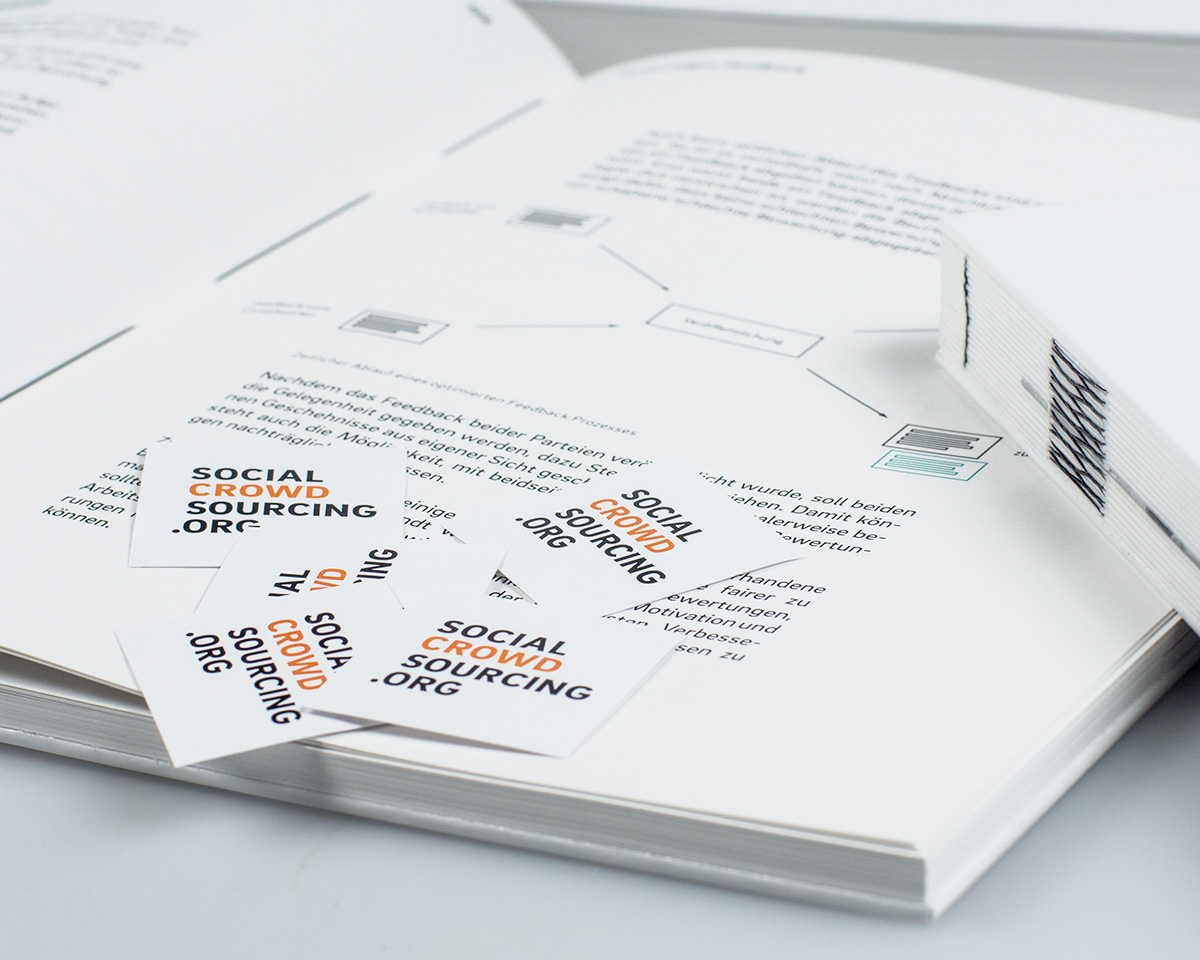



Related Content
Related Links
Awards & Publications
Selected Works
